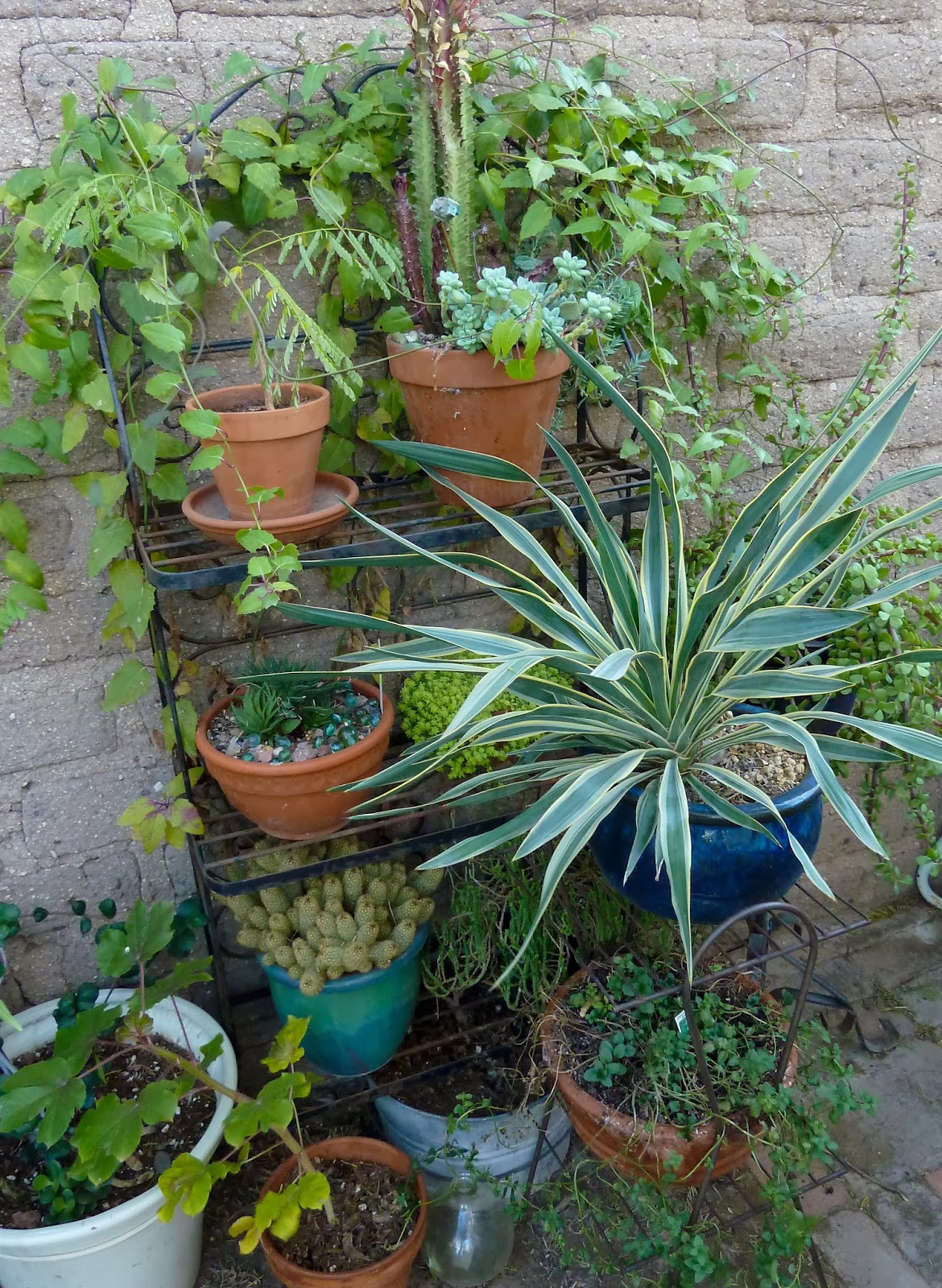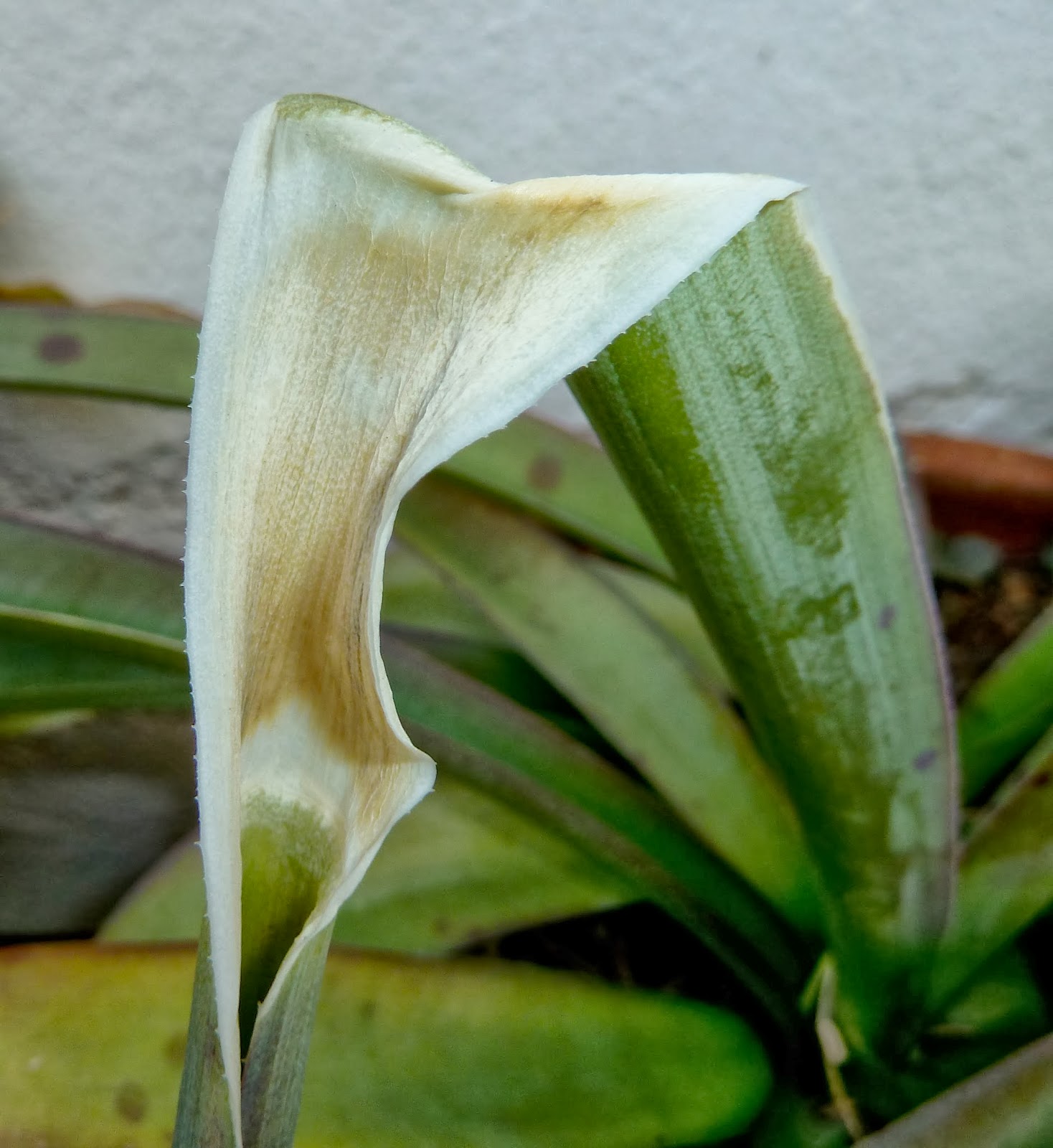 |
| Can you identify this fruit? |
When I first moved to Tucson (long before I discovered my passion for plants), I was truly excited by the large, evergreen tree that shaded our tiny yard. I had no idea what kind of tree it was until I spotted the little green fruit; it was a lime tree. However, even after they got larger, they were the hardest limes that were ever grown on earth (ever). A couple of weeks later the fruit began turning yellow, and we laughed about having thought they were limes (of course ...they were just unripe lemons). When the fruit subsequently began turning orange, we just felt dumb.
I've since gotten a little better at citrus ID, and I've also learned a bit about the cultivars that grow well in a Tucson garden. I've recently been compiling a list of the most commonly grown and sold cultivars for the home garden market, and the merits of each.
This is the first of a multi-part series of posts I'll be making throughout the month of March to share some of what I've learned, starting with oranges! Of course, this list isn't all-inclusive, and I expect to update it from time to time as my research continues. I've started the list with a focus on cultivars that have proven themselves in our climate, and are easily found for sale here in town.
So, without further ado, here's my list of oranges to grow in your Old Pueblo garden:
Navel orange is one
of the best types of citrus for eating fresh because it’s easy to peel and seedless.
This is the type of orange that we typically buy at the grocery store. The
juice is also tasty, but it doesn’t store well, so there are much better
choices for juicing. Navel orange is often sold as just navel orange, with no
cultivar name.
- Cara Cara is the only pigmented navel orange; its flesh looks similar to red grapefruit, but it tastes and peels like a navel. Originally from Venezuela, this is a relatively new variety that was discovered as a mutation on a Washington navel. Ripens December to January.
- Washington is the variety you likely have if you purchased a navel orange with no cultivar name. It’s the most popular variety of navel orange we grow. The large fruit has good quality and flavor, ripening from November to January in the low desert.
Arizona Sweet is a name we use to describe several kinds of oranges that have a delicious sweet flavor. They do have some seeds, and they’re slightly harder to peel, but these oranges are still great for eating fresh. They’re better for juicing than the navel oranges, but not quite as juicy as a Valencia. Although there are several cultivars, these oranges are often sold with the name ‘Arizona Sweet’ rather than the true cultivar name for the tree.
- Hamlin has lower acidity, which gives it a very sweet flavor. The tree is vigorous and productive, medium large in size, and slightly more cold-tolerant than some of our other oranges. The medium sized fruit has 0-6 seeds, and though they’re smaller in the low desert than in more humid environments, the flavor is still excellent. Harvest from November to January in the low desert.
- Marrs ripens earlier than the other sweet oranges (from late October to early February in our climate), but the fruit holds well on the tree, and will have better flavor if harvested in November rather than October. The medium to large fruit is sweet and juicy, low in acidity, with a moderately thick rind and 7-10 seeds (though seediness can vary depending on cross-pollination…more cross-pollinators will make more seeds). It has a tendency to bear fruit in heavy clusters that can give branches a “drooping” appearance.
- Trovita is one of the best sweet oranges for the low desert. It’s more productive in our high heat and low humidity, but this variety does tend to bear heavily in alternating years. Fruit is medium to large and juicy with a thin rind and 6-10 seeds. The flavor is mild but sweet, ripening from December to February.
 |
| This will be delicious juice some day...(Valencia orange blossom) |
Blood Oranges don’t always give us Arizonans the deep red pigments that they’re so famous for (they often require a bit of a cooler climate for good color), but the fruit is just as tasty! Their red pigmentation comes from the presence of anthocyanin, which is the same pigment that gives pomegranate its deep red color. There are several cultivars that are easy to find here in Tucson.
- Moro is the most reliable blood orange for darker color in our warm climate. The rind and flesh can turn anywhere from bright red to dark purple in January to February (when they ripen). The flavor is berry-like with a hint of spice, and it has few seeds (if any). It tends to bear fruit in clusters, and produces larger crops on alternating years.
- Sanguinelli ripens a little later than the other blood oranges (Jan to March). It has medium-sized, egg-shaped fruit with only a few seeds. ‘Sanguinelli’ is said to be slightly less acidic (sweeter) than ‘Moro’, and more reliable than ‘Tarocco’ for red pigmentation. Small to medium sized tree that is very productive.
- Tarocco originally came from the Mediterranean, so it’s well adapted to our climate. The rind is fairly easy to peel, and its color is primarily orange with little (if any) red pigmentation. The fruit is the largest of the blood oranges, and many agree that it’s also the sweetest. There are few to no seeds, and harvest time is in January or February. Though it’s said that ‘Tarocco’ is less productive than other blood oranges, it will still produce more than enough fruit for a home garden.









